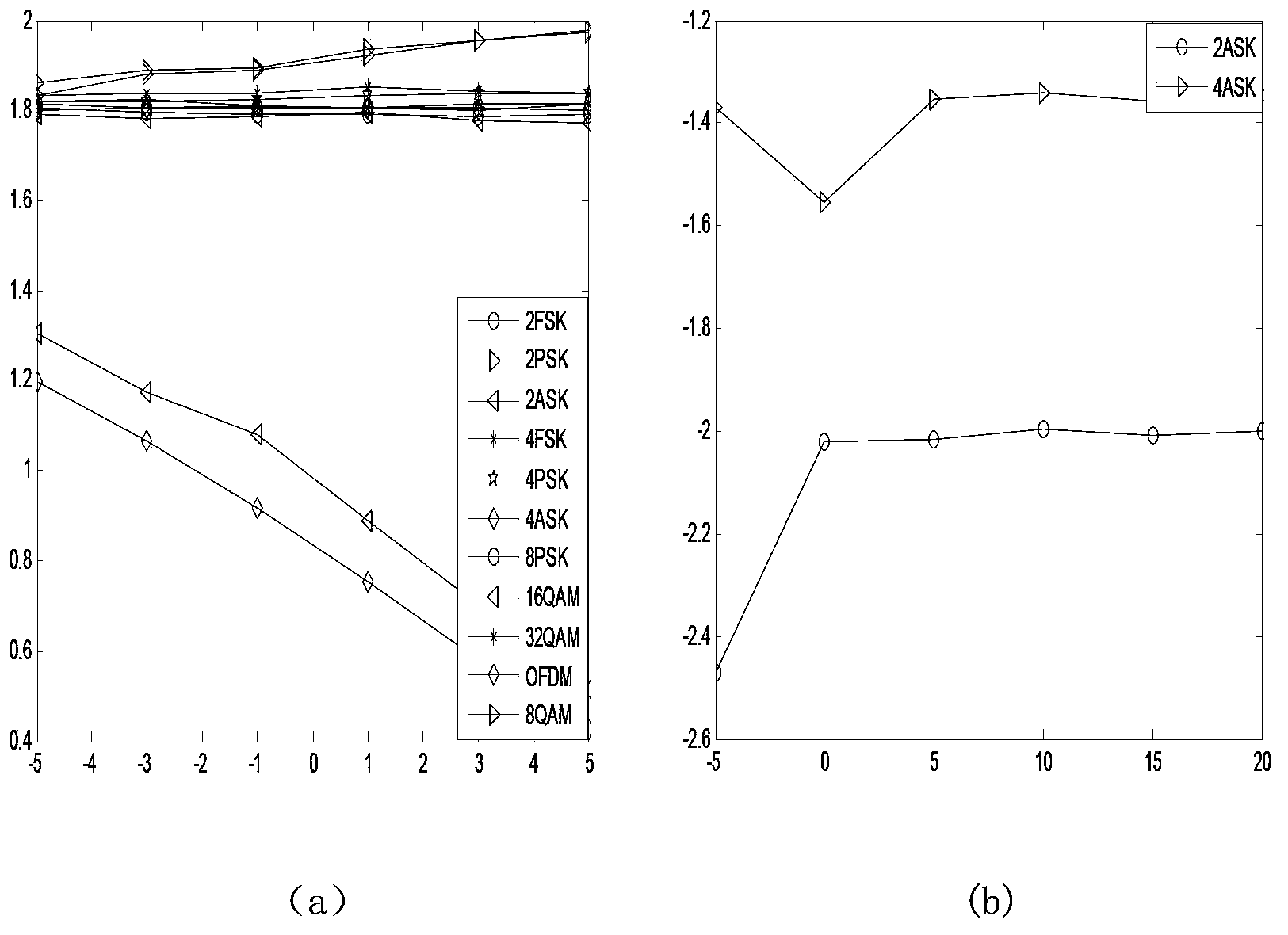Evidence-discount-based cooperative modulation identification method
A technology of modulation recognition and evidence discounting, applied in the field of communication, which can solve the problems of recognition errors, low recognition rate, deep fading, etc.
- Summary
- Abstract
- Description
- Claims
- Application Information
AI Technical Summary
Problems solved by technology
Method used
Image
Examples
Embodiment Construction
[0044]The characteristic parameter is the key to distinguish the modulated signal, and the extracted characteristic parameter is required to be insensitive to the signal-to-noise ratio, but sensitive to the modulation type. In addition, it is best for the parameters to be complementary, because some parameters cannot distinguish the modulation type of the signal under certain signal-to-noise ratios, but if there is another parameter that can distinguish the modulation type under this signal-to-noise ratio, the two can be combined A parameter completes the identification of the signal modulation type. Since there are many types of signals to be identified in the present invention, the recognition effect is not very good if only parameters based on instantaneous characteristics or high-order cumulants are used, so the present invention selects the following 7 characteristic parameters as the identification of these 11 modulations Signal characteristic parameters: 3 parameters ba...
PUM
 Login to View More
Login to View More Abstract
Description
Claims
Application Information
 Login to View More
Login to View More - R&D
- Intellectual Property
- Life Sciences
- Materials
- Tech Scout
- Unparalleled Data Quality
- Higher Quality Content
- 60% Fewer Hallucinations
Browse by: Latest US Patents, China's latest patents, Technical Efficacy Thesaurus, Application Domain, Technology Topic, Popular Technical Reports.
© 2025 PatSnap. All rights reserved.Legal|Privacy policy|Modern Slavery Act Transparency Statement|Sitemap|About US| Contact US: help@patsnap.com



